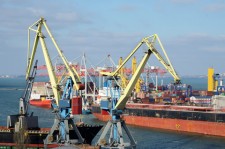Foreign trade
Foreign trade impact of currency exchange rates
Trade between countries is one of the reasons why the currency trading occurs and is one of the key factors affecting exchange rates in the long term.
The value of all exports and imports of goods and services called the current account balance.
By looking at a country’s current account with the outside world over a longer period, you can see how prosperous and competitive the economy of a country is.
Competitive and strong economies tend to have a positive current account balance, because over a longer period they tend to export more than importing, which in turn ladder to strengthened exchange rates since demand for its currency is greater than the supply.
By analyzing the current account deficit with the outside world may be an indication of a country’s economy, but if you analyze the trade balance between individual countries, you will have a much better understanding about the currency’s strength and exchange rates.
The trend is your friend
What affects currency exchange rate is not the size of the current account balance, but its trajectory. The current account may have a positive balance, ie a country exports more than it imports. But if exports decrease, it is a sign that the currency will weaken in the future. It requires a little more in-depth analysis to determine whether the trend will be sustained or whether it is a short-term deviation from the long-term trend.
Which products dominate foreign trade?
It is also very important to look at what goods and services a country exports mainly consists of. Usually it is a good idea to look at whether a country importing consumer goods or investment goods.
Trading with consumer goods
It the majority consists of consumer goods, it may adversely affect the exchange rate, as these products are seldom used to create any value, while consumer goods rarely increase in value. Consumer goods value decreases rather gradually, to eventually be abandoned entirely, such as cars.
Trading with capital goods
When imports are dominated by capital goods, it usually led to a strengthened exchange rate. Investment goods tend to be used to create value, whether imports machinery leads to higher productivity, which increases the competitiveness of exports increases that affect the current account balance positive.
Exports and exchange rates
For exports, it is important to look at which goods and services it consists of and how diversified they are. On some occasions, the structure of the export leading to a high volatility in a currency’s exchange rate. If exports are dominated by a single product, its generally seen as a negative factor, since even small fluctuations in demand can lead to major changes in the current account and hence large changes in exchange rates.
It is also important to analyze the exports consist of industrial products, automobiles, or other goods with low value added such as raw materials and other simple products. For example, if only exporting raw materials such as crude oil, there is a high risk of volatile exchange rate based upon the current oil price.
Let us take the example of Norway. In Norway, crude oil dominates as the main source of exports. The Norwegian krona tends to be quite volatile, because export earnings vary widely depending on the crude oil market. If the price of oil goes up, it leads to the exchange rate goes up as export revenue increases.
Previous article (GDP Growth) – Next articles (Valuation of currencies)
Anything we forgot about exchange rates and foreign trade? Do not hesitate to send us an e-mail.






